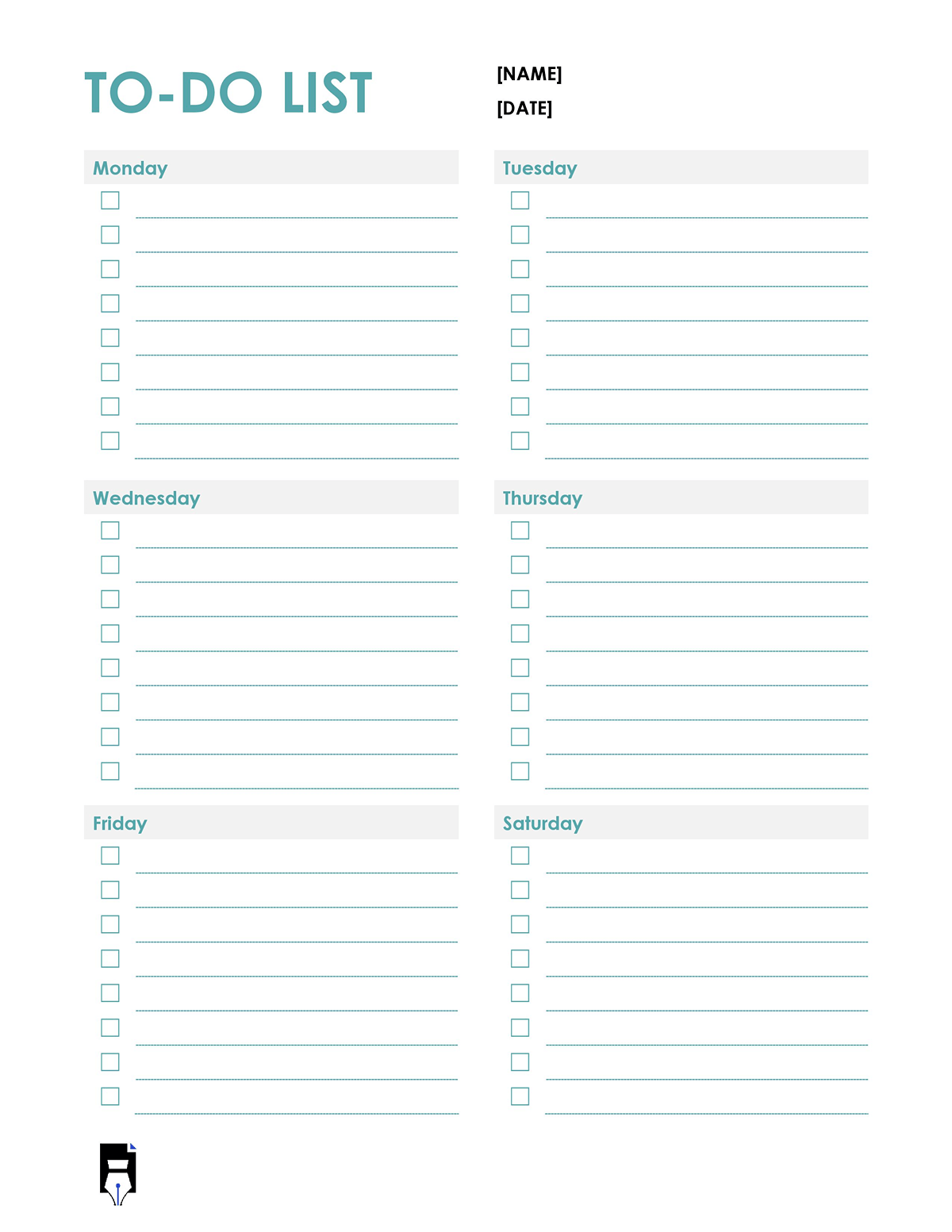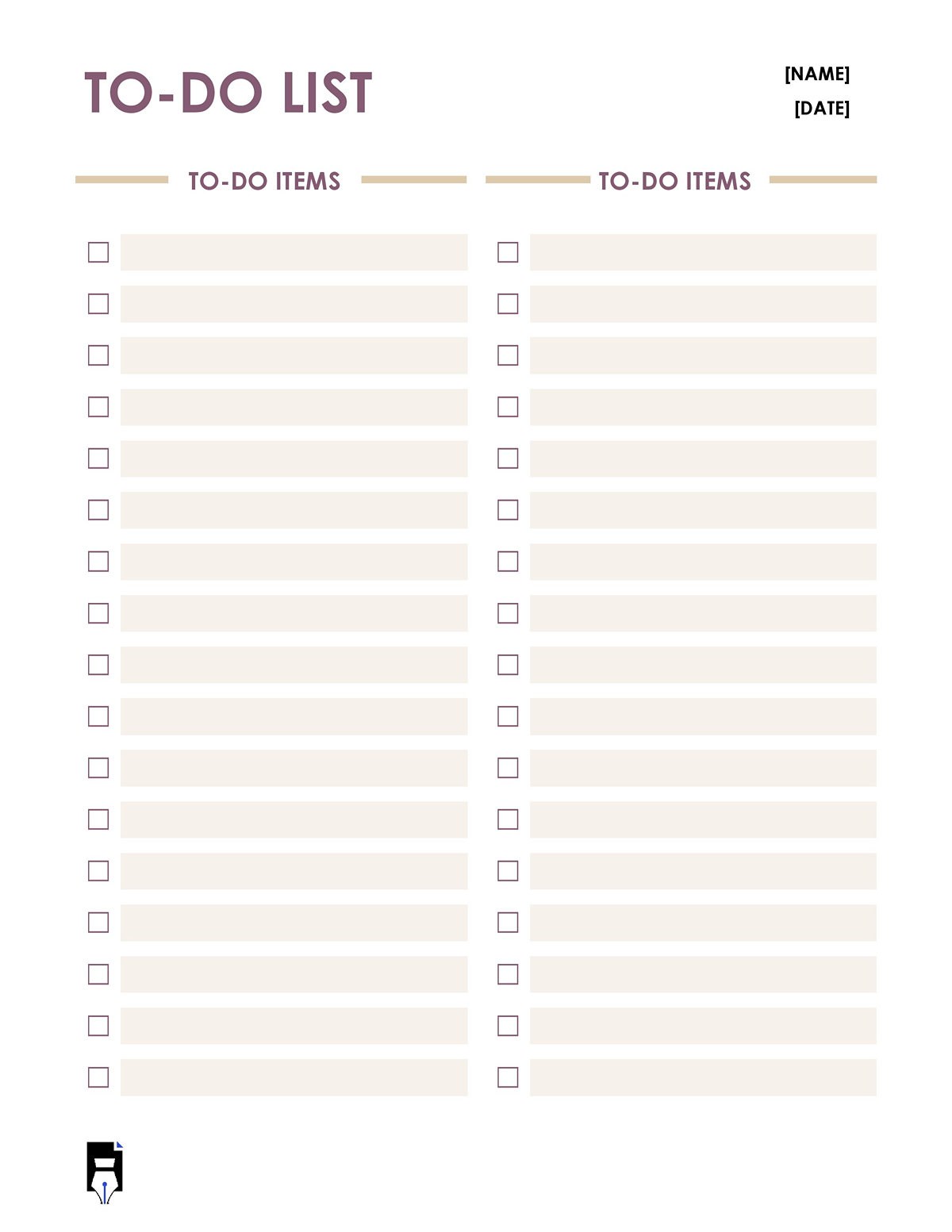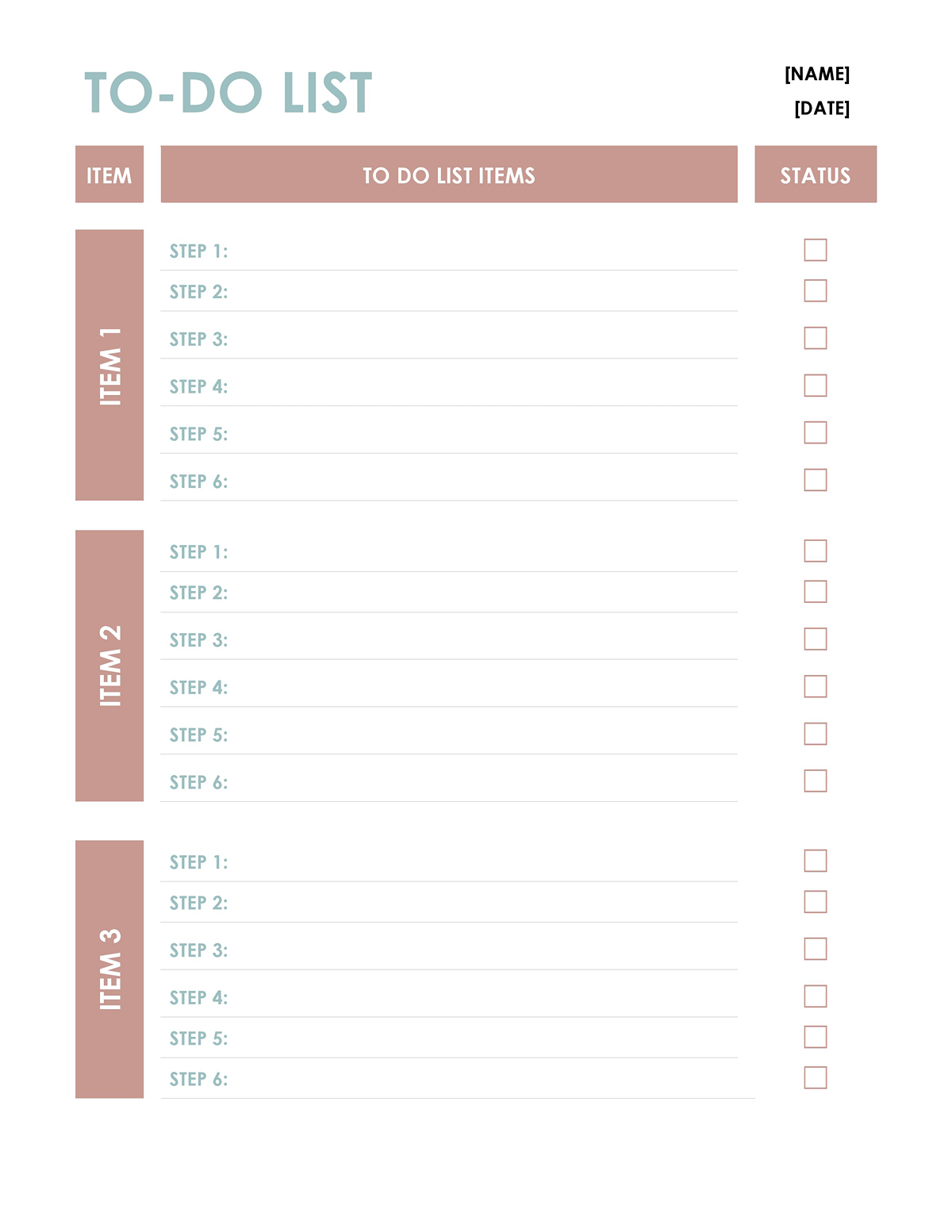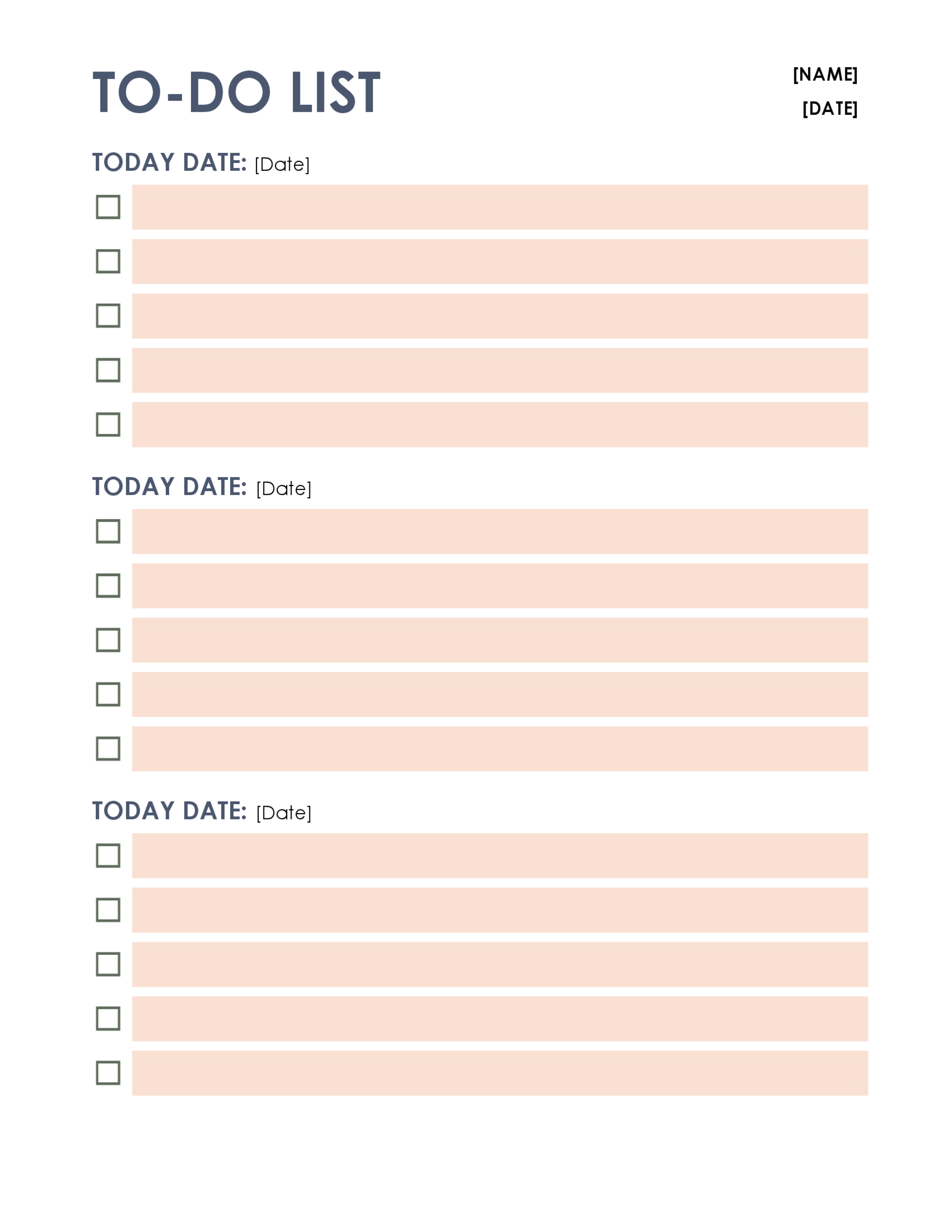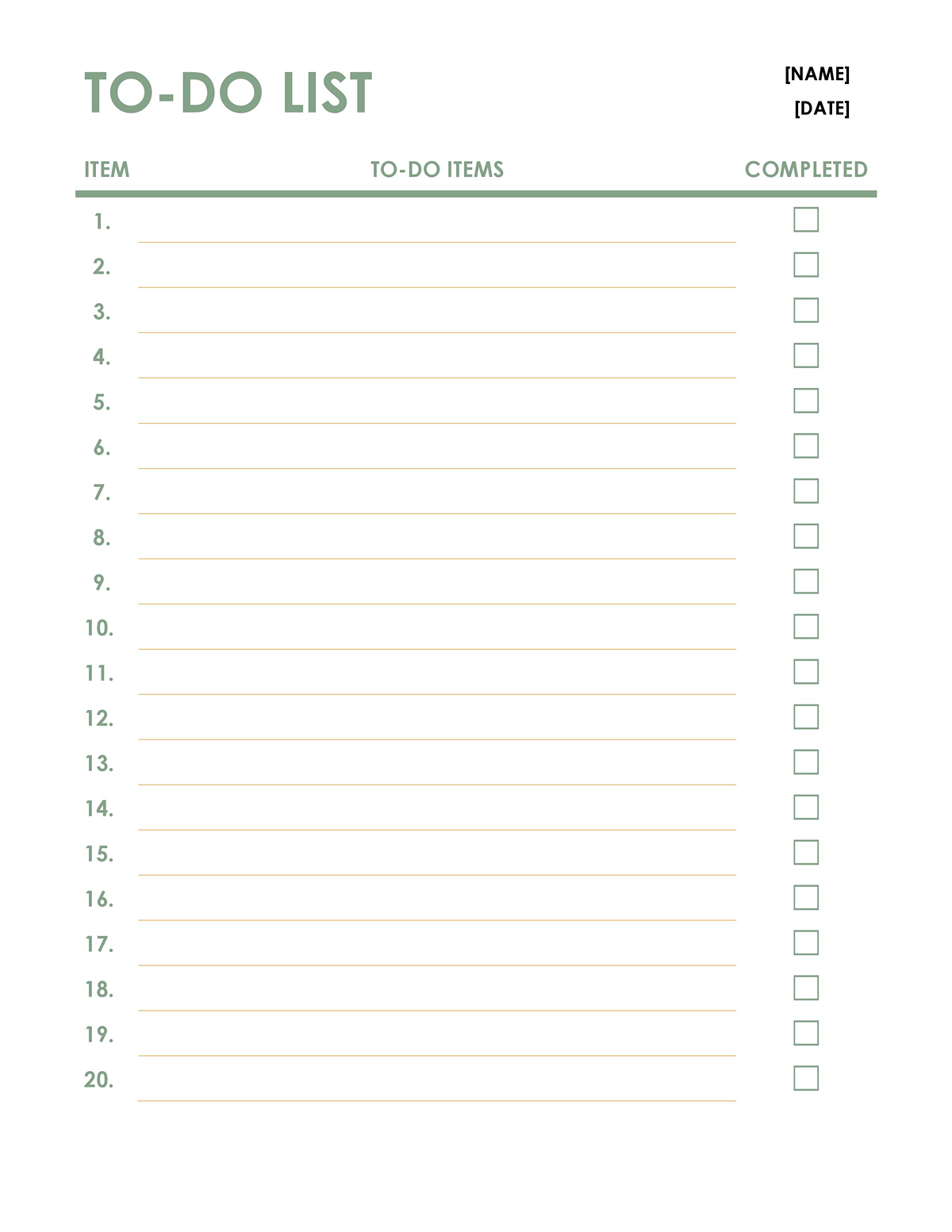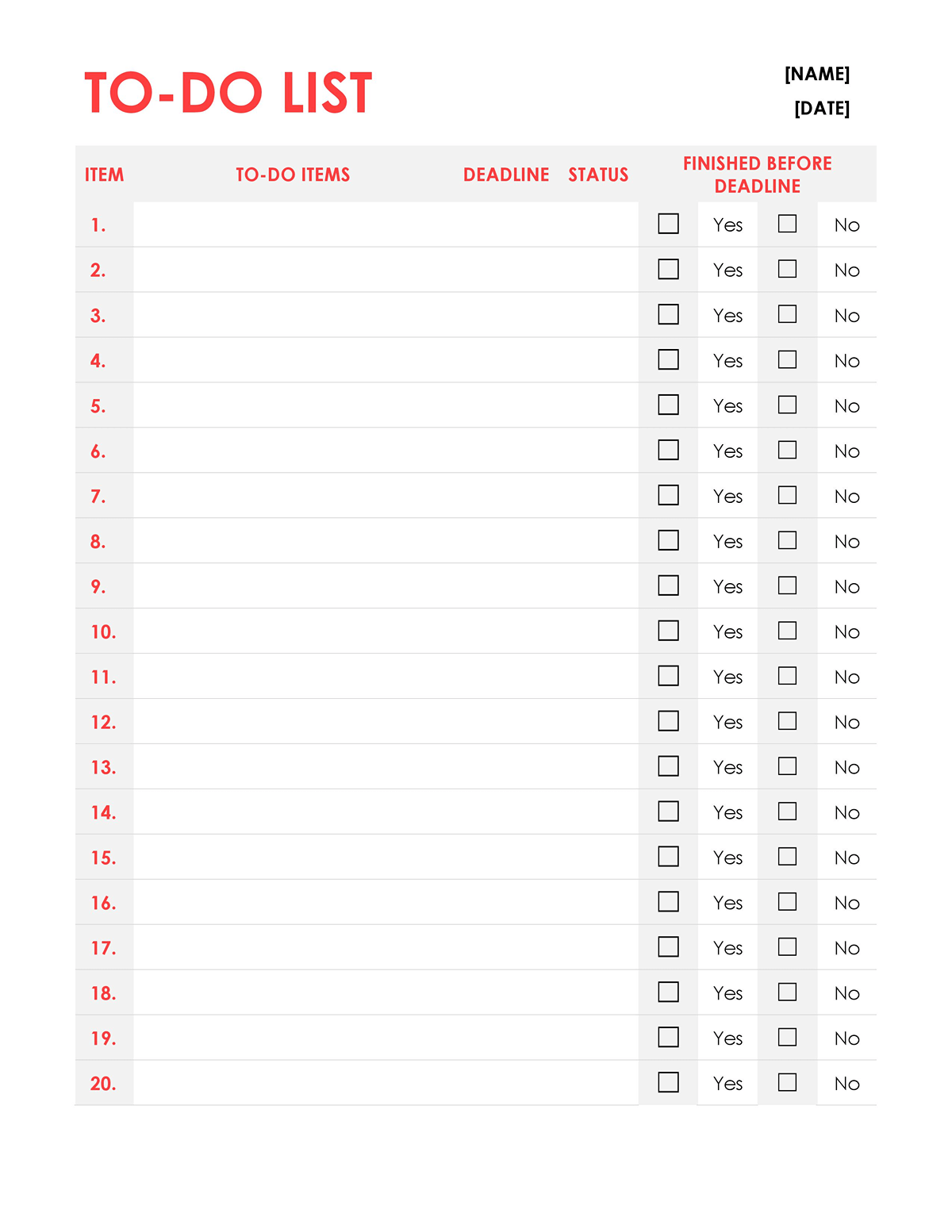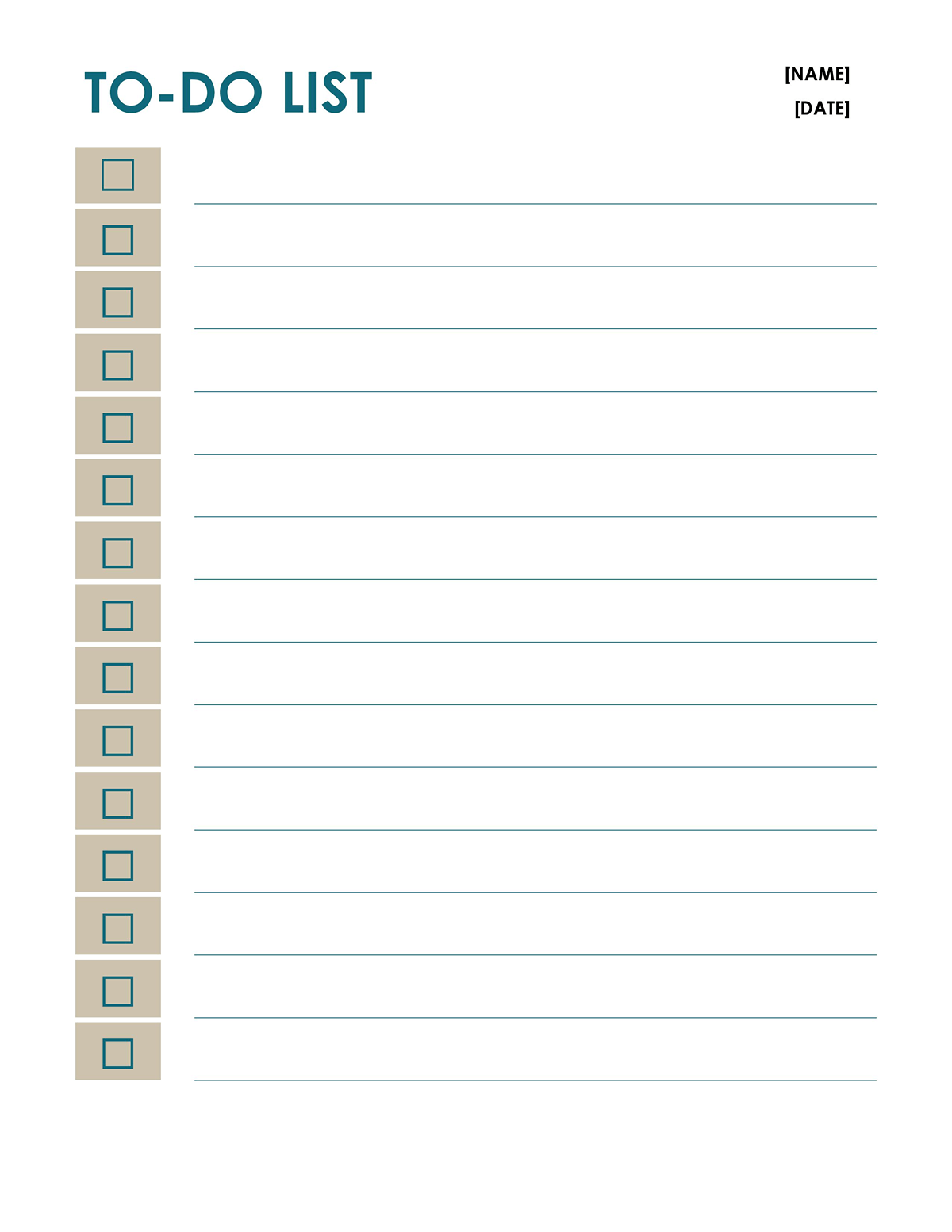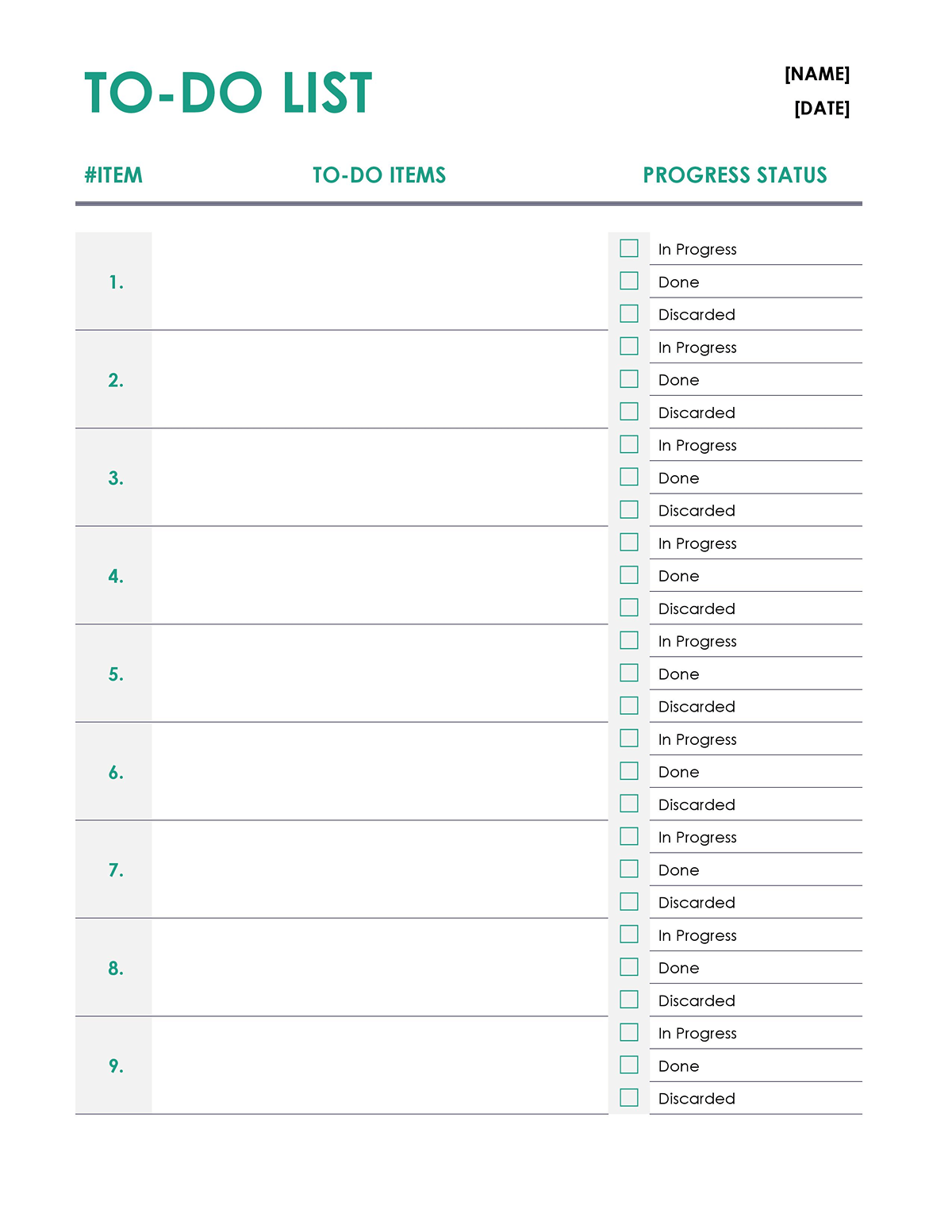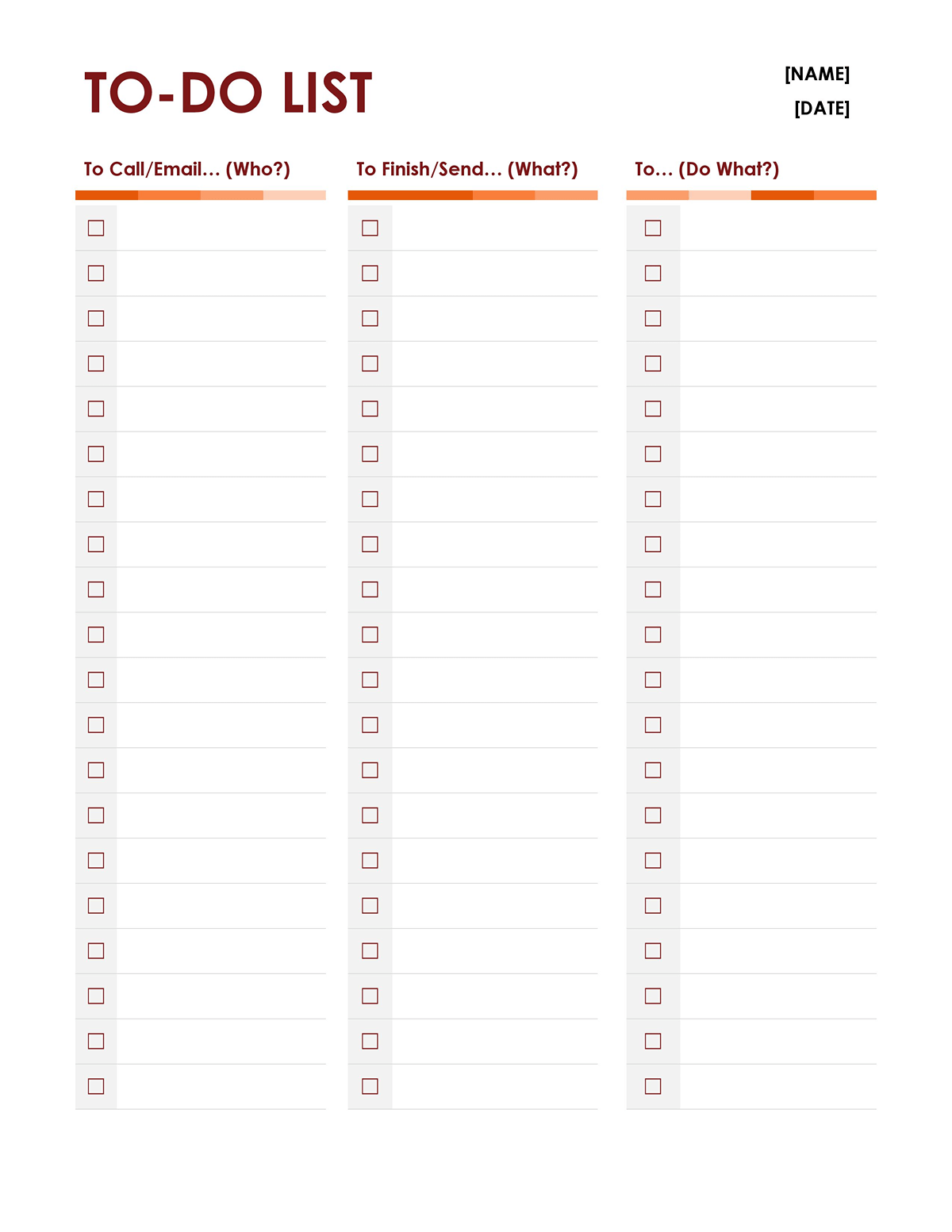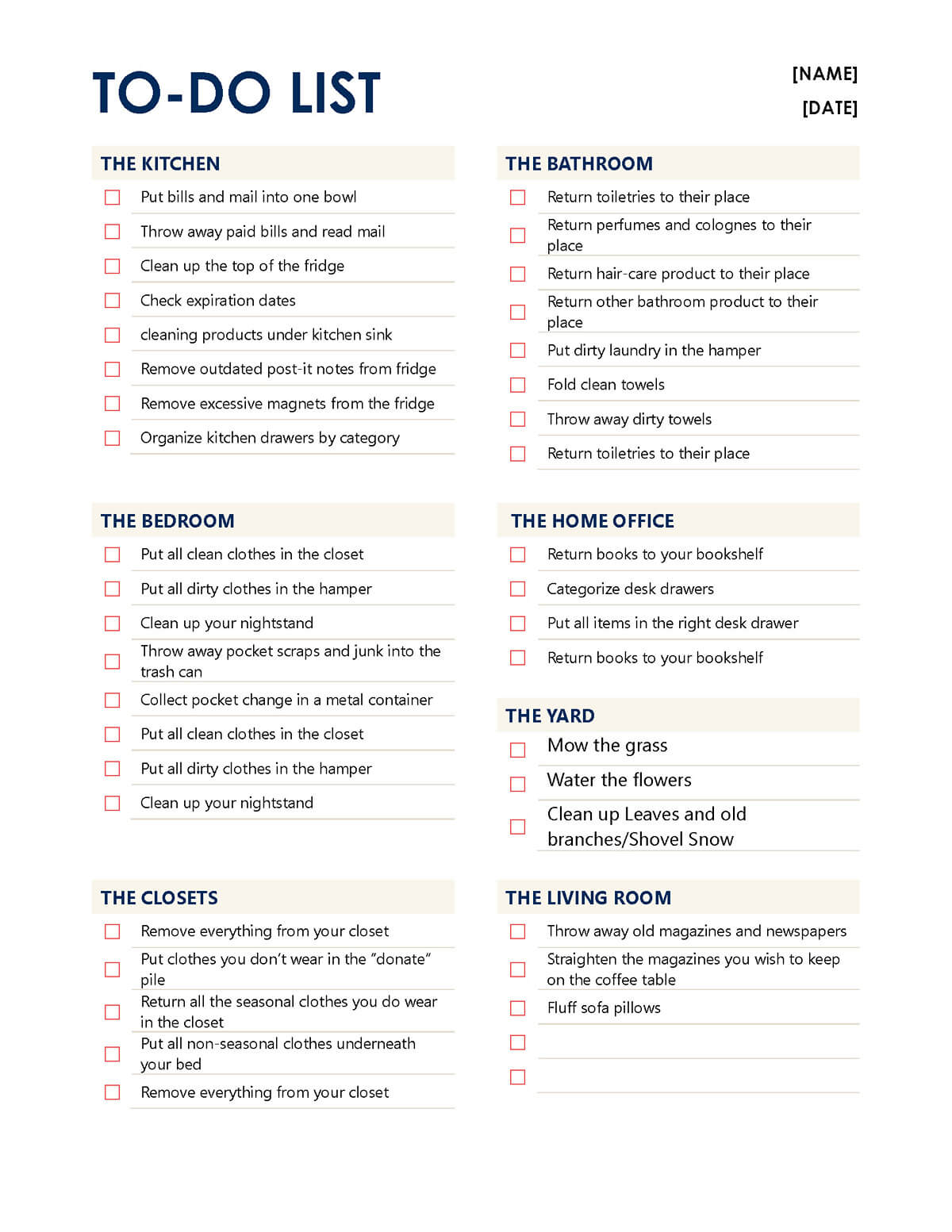Orderliness is an excellent way to increase your daily productivity. Being organized includes planning, scheduling, and implementing your daily plans consistently. A to-do list outlines your daily, weekly, monthly, and yearly tasks in one place to help you track which tasks have been completed, which are ongoing, and which ones have not been started yet. You can create the list using a template. A template allows you to add and edit tasks using a word-processing program.
A well-prepared list ensures that you prioritize outstanding tasks based on their urgency and significance. In addition, you can clear your schedule and create time for other essential things such as family time, vacation, rest, and exercise if consistently implemented. So, discipline is needed for the to-do list to be beneficial.
This article delves into a to-do list template, its importance, how to create one, and the proven practices of making it functional.
To-Do List Templates
There are templates available that can be tailored to your needs. Our readers can access such to-do list templates from our site. The templates are free to download and easy to customize. Since you will often have to create to-do lists from time to time, using a template can help save time and effort as they are reusable.
What is a To-Do List?
A to-do is an itemized list of tasks you intend to complete within a specific period.
Tasks can be arranged in order of priority or by date. The list can also organize errands, such as grocery shopping, car maintenance, lawn mowing, report submission, etc. The list provides clarity and focus, which are essential for increasing productivity.
When and when not to use a to-do list?
You should create a to-do list when you have to complete tasks within a specified period, say by the end of the day or when you have a lot of activities that have to be done. First, identify the tasks you must complete, create a list and execute it.
A to-do list may not be necessary in some cases. A list is for time-bound activities with specified deadlines or duration. Therefore, this is not meant to ensure that each task is completed indefinitely but rather to keep you focused on each task until progress is made. Thus, assigning deadlines on a to-do sheet may become more stressful while trying to beat deadlines rather than make progress. Also, a to-do list may not be helpful if procrastination is your biggest challenge in getting things done.
Do you know? Remember that creating a to-do sheet for someone else tells them what they must do. However, if you prepare one for yourself, it functions as a cryptic note more than a list of instructions.
Categories of a To-Do List
A to-do list can be personal or business-related. A personal list is created based on your daily activities and errands. A template for a business-related to-do list would be more on your project-specific tasks and work-related errands.
However, there are other categories of to-do lists, including:
Vision list
A vision list is a wish list of the things you want to do, things you want to learn, or places you want to visit. You can write down your goals and plans so that they are visible and can continuously be tracked. This list should be a source of motivation to achieve the listed items.
Maybe someday list
This list is for things you may do in the future if time and other factors, such as resources, permit. It includes things that are not entirely important but you may want to do later in your life. This is often an extension of your vision list. It prevents the vision list from being too long and overwhelming.
The 100-day to-do list
A short list of items you want to do in 100 days. They can be plans, goals, and tasks you want to do by half the year – 6 months (two quarters). It is common in business and politics where a leader gets 100-day periods (quarters) to implement new policies and strategies.
Weekly list
It is a weekly to-do list based on your priorities at the moment. This template is broken down into weekly tasks. It is typically prepared on Sunday evening or Monday morning. Students and office workers often use it to help them organize their time better.
Done list
This is a list of things you have already completed. You can also write a summary of what has been done during the week or what you have finished during the day or month. It is a great motivator when you are feeling discouraged and not productive.
Daily 3T list
Daily goals are the small tasks that will take you toward your more giant objective, such as weekly or quarterly goals, whether it is for your personal life or your career development. A daily 3T list focuses on the three top most important tasks, hence the day’s name, 3T (3 tasks). Individuals or teams can use this list.
Not to-do list
A not-to-do list represents things you want to avoid or stop doing. It can also be a list of disruptive activities to your life or productivity. Tasks on this list can be delegated and outsourced to other people or deleted from your plans.
Kaizen list
A Kaizen list is based on the Kaizen philosophy of constantly improving yourself. It lists activities you should take to improve your personal and professional life. It cultivates a growth mindset and can address any aspect of your life that you want to improve.
Reading list
This is a list of books that you want to read. You should mark each book after reading it. You can aim for a book every two weeks or a month. A reading list is helpful if you are into personal development, self-help literature, and self-improvement in general.
Advantages
A regular to-do list will help you organize your life and improve productivity at work and home. Here are the benefits of using a list template:
Provides motivation
The list is an excellent source of intrinsic and extrinsic motivation. Motivation can be generated in different ways. By outlining the things you have to do in an organized manner, you become motivated to finish them and meet your periodic goals. Once you have completed a task and crossed it off the list, this creates extra motivation to perform other tasks.
Increases productivity
To-do lists help track all the tasks you need to do for the day. You create a list based on your priorities and follow up on them throughout the day. This helps in planning and managing your time by preventing you from overlooking important tasks until the last minute. This ensures you utilize your time effectively and get more work done.
Reduces stress
By creating a to-do sheet, you can outline tasks you can complete within the available time. This allows you to get work done without overwhelming yourself with too many tasks in a short period. This, in turn, reduces the anxiety of having too much to do with limited time. So, your list should be realistic, short, and manageable. Else, it can have contrary results and lead to more frustration.
Improves memory
Once tasks or activities are listed, the list can be a reminder of tasks you may have forgotten. In addition, by constantly reviewing your list, your memory improves as your brain continues to retain information on the list.
Allows personal time
Sometimes it is easy to get buried in endless errands at work, home, and personal life. With a busy schedule, you may end up not having any personal time to spare. This can lower your quality of life. However, having an effective execution plan is a good way of ensuring enough time for every portion of your life, including rest and recreation. This is because you can organize your to-do activities efficiently. This ensures you have free time to slot in leisure-time activities, exercise routines, hobbies, vacations, and family activities in your week, month, and year.
Give a sense of accomplishment
When you complete a task, you get a sense of accomplishment, reinforcing the need to do it again. It also helps in achieving self-improvement as you see results from your efforts. This can also motivate you to continue with new tasks that could lead to a healthier quality of life.
To-Do List Vs. Process
A good process contains all the steps of a task to be completed in a logical order, unlike a to-do list, which itemizes the tasks or actions to be taken. A process can be detailed, showing all the decisions to be made before a task or project is completed. The process can be a one-off procedure or recurrent. Despite the differences, both can be used to achieve a common goal.
How to Create a To-Do List in MS Word and Excel?
You can create a template for your to-do lists using an MS Excel spreadsheet, MS word processing program, or any other content management system. It is usually a simple and easy process that can be done in a few steps.
Below are the guides on using these two programs to create professional and effective to-do lists:
MS Word
Individuals and businesses widely use Microsoft Word to create to-do lists. It is popular software that is convenient for most businesses and people.
The steps to create a to-do list in MS Word are as follows:
Open a new document
Start by opening a new word document. Go to “Options” and click “New,” then select “blank Document” and click on “Create.”

Title your page
Once the document has been created, add a title/heading for your to-do list. Go to “Insert,” then move the cursor to “Text Box,” click the drop-down menu and select “Draw Text Box.” Add the title in the text box. This can be done by writing or making notes on your sheet titled “To Do List” or “Tasks.”

Insert a table
Then, add a table to itemize the tasks. Go to “Insert,” click on “Table,” and on the drop-down bar, select the number of rows and columns you want on the table and create the table.

Design your table
Next, you need to personalize the table. Select the table and navigate to the “Design” command. Select the design you prefer.

Label the chart
You should then title each column appropriately. Next, click on the column and start typing. This way, you can add descriptions or details of how the tasks will be monitored. For example, include the following items: tasks, priority, start date, deadline, by whom, in progress, and done.

Save the document
Once the to-do list is created, you should save it. First, click “File,” then select “Save As.” Next, click on “Word Template” from the drop-down menu. You should then name your template by adding the title you used in step ii above. Finally, click on “save.”

MS Excel
MS Excel can also be used to create a template for your to-do lists. Excel allows you to include different metrics and charts to help implement your list. Here is how you can create a to-do list in Excel:
Open a new document
To create a to-do list in Excel, you should first open a new document. Then, on the ribbon, select “File,” and then select “New,” then click “Blank Workbook.”

Create column headings
After creating a new workbook, you should add column headings. To do this, click on the cell and type the headings. For example, you can include the following items – task name, status, deadline, and note. In addition, you can include other details necessary for tracking your tasks.

Fill in the required information
Next, you can add the different tasks you need to do. You can include as many tasks as you prefer. Make sure to fill out the task name and task status sections appropriately.

Add filters
In Excel, you can add a filter to check the status of your tasks. First, select the “Task status” column on the ribbon, go to “Data,” and then from the drop-down menu, select “filter,” and then add your task process. The process is saved automatically, and the filter is added for future use.

Sort your tasks
Go to the “Status” box and click the inverted arrow to sort your tasks. You can arrange your list based on the task statuses from this section. Also, you can select or deselect task statuses you do not want to view; for instance, if you want to see which tasks are ongoing, deselect the pending and done options.

Save the file
Save the document by clicking “File” and then select “Save As.” Next, select the location where you want to save your file, name it and click on “save.”

Do’s and Don’ts
There are specific things to keep in mind when creating a to-do list to make it as practical and functional as possible.
Do’s
They include:
- Figure out the tasks: Always identify your short-term and long-term plans and list all the tasks that must be completed. These plans and tasks can then be broken down into doable and manageable tasks, itemized on the to-do list. Once you have figured out the tasks, organize them in a logical, sequential order.
- Make more than one list: Create lists for different aspects of your life. For example, you can make lists for work-related, personal errands, household activities, shopping errands, a to-do list for kids, etc. By creating separate lists, you avoid intermixing activities. It also helps you focus on related activities at a time.
- Write your tasks as they pop up: Write down the tasks as soon as they come to your mind by using a phone or notepad. Do not wait to write them at the end of the day. This prevents you from dwelling too much on a task and ensures you do not forget these tasks.
- Set your priorities: You must prioritize the tasks to organize yourself and manage your time better. It should be based on the importance of the task, how long it will take, or how soon you need to accomplish it.
- Assign due dates: It is essential to add due dates to all your tasks. This helps you manage how much time you spend on a single task. The due dates do not have to be definite for every task. However, the dates are essential for planning your day or week.
- Create a list for each week or day: Always create a list for a particular day or week. This helps you to prioritize tasks and prevents you from postponing or skipping any tasks. For example, you can make your daily to-do list by identifying three top-priority tasks. Alternatively, you can outline six tasks to complete the next day and order them in terms of priority. Also, you can outline thirteen tasks and categorize them as follows – one high priority, three medium priority, and nine low priority tasks. For tasks that span multiple days, spread them within the weekdays.
- Put tasks, not goals, on the to-do list: A to-do list is designed to outline tasks for daily activities and not goals and objectives. Tasks are actions that can be quantified. Goals are bigger and long-term desired outcomes. Objectives are targets that can be used to measure if a goal was achieved. Each objective can be broken down into multiple tasks. So, do not confuse the three.
- Break large tasks into small tasks: You should break large tasks into smaller bite-sized chunks (sub-tasks). This is because large tasks take longer to be completed, which is discouraging. Small manageable tasks have the opposite effect. Small tasks are easier and faster to complete; therefore, you cross off these tasks in your to-do list to get motivation. This makes it easier for you to complete the task in a short period.
- Add only 3-5 tasks per day: Try to limit the number of tasks you add per day. This helps you avoid overwhelming yourself. When you list ten or more daily tasks, your list could feel overwhelming, and you might skip some. Also, it cannot be easy to properly manage your time when you have too many tasks to accomplish in a day. Three to five tasks will typically be enough. Do not include more than two routine tasks in these 3-5tasks.
- Delete low-value tasks: It is essential to review and delete unnecessary or low-value tasks. This is because you want to focus on the most critical tasks that add value to your life. Low-value tasks can crowd your to-do list and make it challenging to implement the list.
- Modify your to-do list regularly: Make sure you edit your to-do list every morning, at lunch, or in the evening. This is because many things can change, and you might want to adjust your tasks. You should use your to-do list to manage the incoming tasks. Reviewing the list is also a great way to learn what you must do in advance.
- Track your tasks: You need to track your tasks so that you can monitor your progress. First, check what you have completed and what is left. Then, once you have completed a task, always write the date/time when it was done and update its status. This will help you plan the future and see what comes next.
Don’ts
You need to avoid some things when creating and implementing a to-do list. These include:
- Not have time to update your to-do list regularly: If your to-do list is out of date, it can cause you to miss necessary appointments, forget things, cause delays and lose focus. So, do not forget to update your list based on any changes in your activities and tasks.
- Too many items on the list: An overwhelming number of tasks on your to-do list can cause you to feel devastated and stressed, and it is often difficult to choose which tasks to prioritize. So, you need to limit the number of tasks on your list – 3-5 major daily tasks are manageable.
- Starting with simple tasks: Do not start with easy and less demanding tasks. High-priority items that require a lot of energy and effort should be placed at the top of your to-do list. Simple tasks can be done in your spare time. You can select when to complete them depending on how busy you are each day.
- Boring to-do list: If you find your list to be boring, you will not be motivated to take a look at it. Therefore, your list must be as enjoyable and exciting as possible so that you find it easy to complete tasks. This can be done by using appealing designs and not incorporating too many items.
- Micromanaging yourself: Do not micromanage yourself with the to-do list. Not everything you do during your day has to be included in the list. Instead, focus on high-impact and low-value tasks that contribute to significant parts of your life. You can sort the tasks by including tasks whose duration ranges from about two hours. For example, you do not have to include simple tasks like taking a bath.
Frequently Asked Questions
How do you plan tasks?
The planning of your tasks involves different steps. You can start by creating a plan for each day by identifying the critical things you need to complete. Then, create a to-do list. Next, add associated due dates and statuses. Lastly, frequently review the list to update tasks’ statuses.
What is the best to-do list?
No perfect to-do list encompasses all the activities and tasks you need to do. Therefore, you should assess different templates first. In addition, a suitable template should be flexible enough to accommodate changes in your life or business so that it can be helpful for extended periods.
How many items/tasks should you put on your to-do list?
You must ensure that the types of tasks you enlist are realistic and achievable. The number of tasks you put on a to-do list depends on the situation. If you have many items to accomplish in a day, then you need to work on prioritizing and categorizing them. You can include at least three items and above. However, limit the number of tasks so that the list becomes easy to implement.
What is the best approach to organizing a to-do list?
The best way to organize a to-do list is by creating a system that will help you complete the required activities and tasks without overwhelming you. This is dependent on certain factors such as business goals and objectives, the priority of tasks, and urgency or deadline. The tasks can be divided into sections and pages outlining the short-term and long-term tasks.
